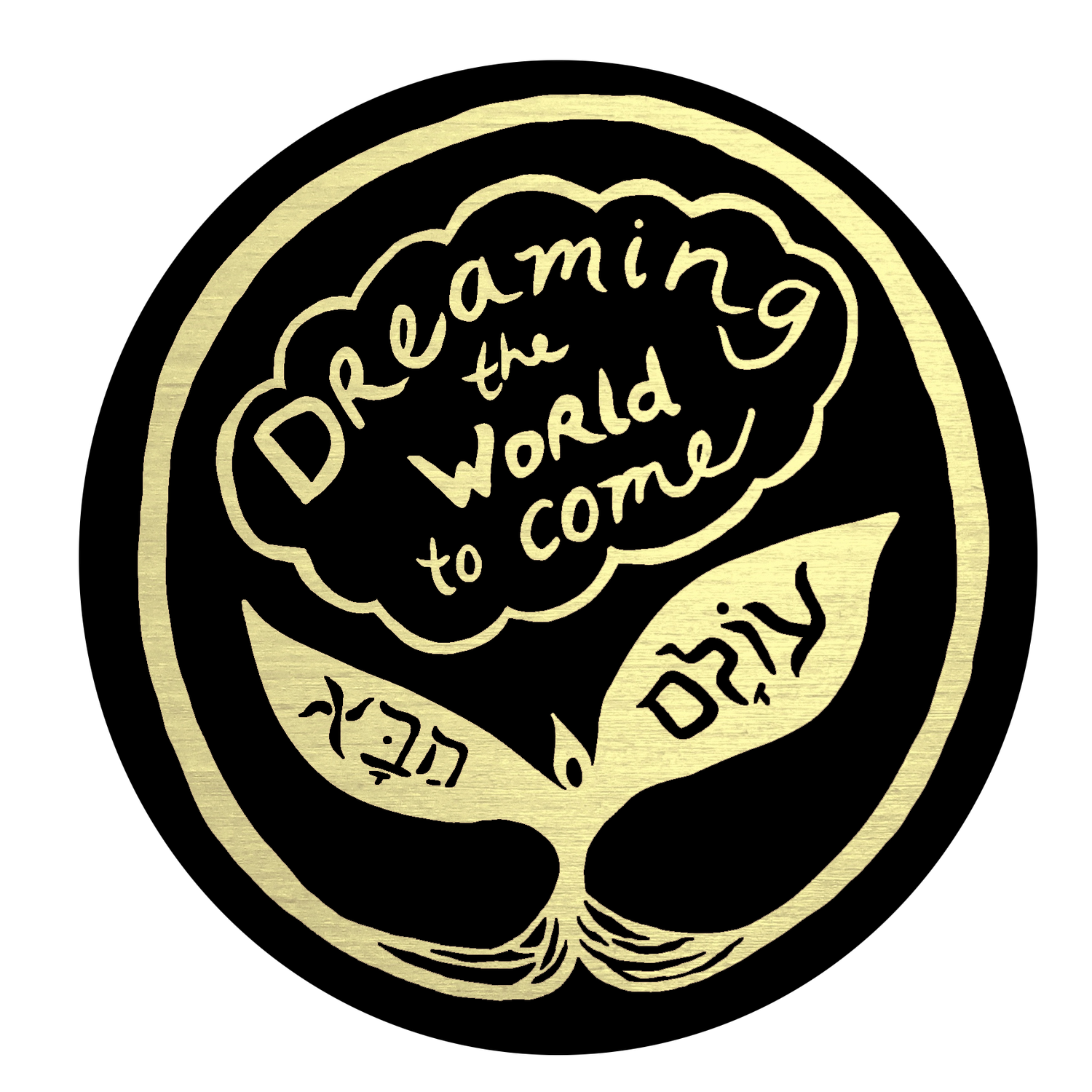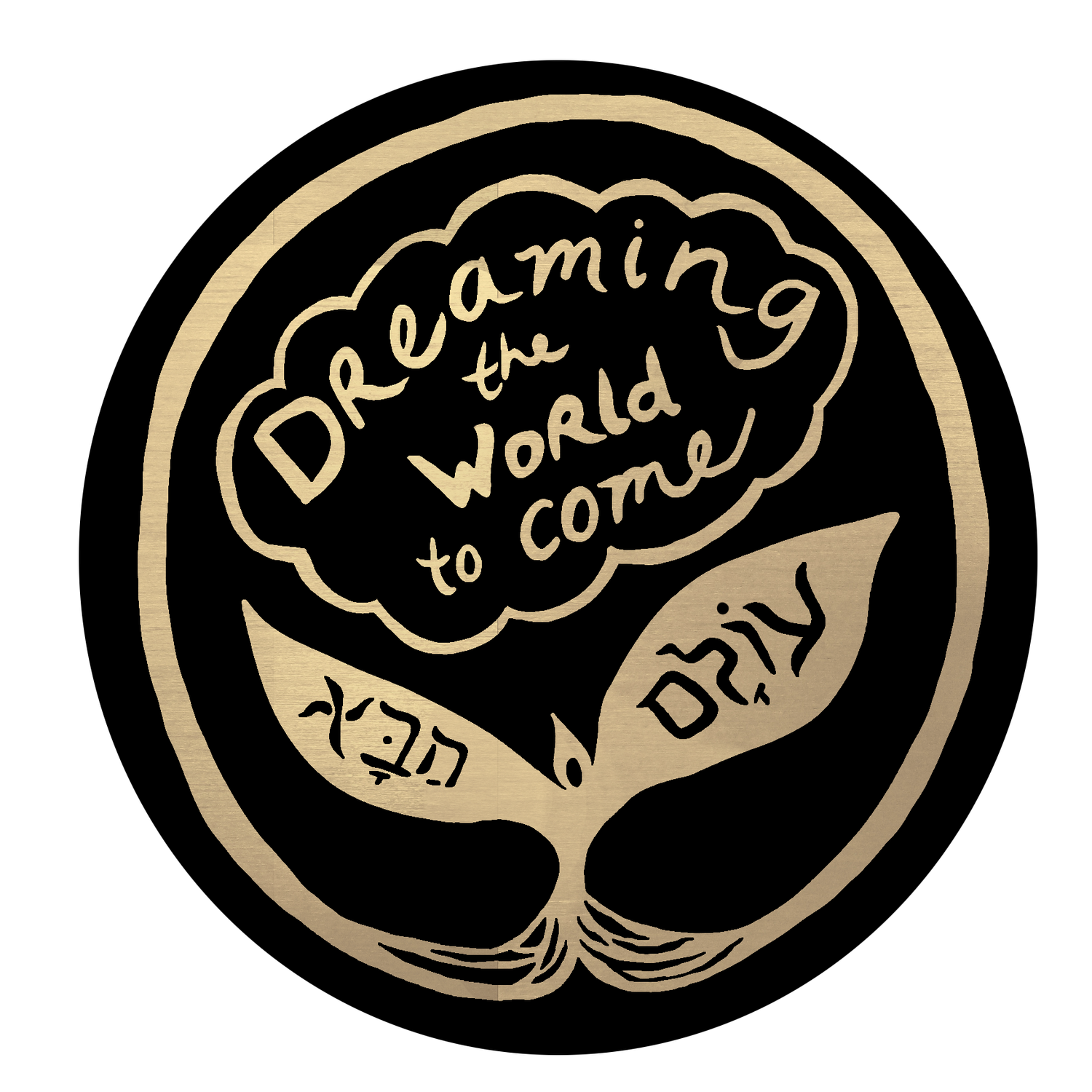Kislev / Nov-Dec
Kislev Associations:
HOLIDAYS: Chanukah
ARCHETYPE/NETIVAH: Ba’alat Ov (The Witch)
ASTROLOGICAL SIGN: Saggitarius
TAROT CARD: Temperance
HEBREW LETTER: Samech ס
First There Was Darkness: Kislev and the Dream Portal Practice
by Jonah Aline Daniel
In Jewish time, the day begins with the darkness. Before there is light, before there is sun, before there is activity and labor, there is rest. There are dreams. Almost as if rest, surrender, and the wisdom brought from connection with darkness and our dream worlds are required for having balanced, just, and fulfilling days.
Kislev contains a journey through the longest nights of darkness, toward winter solstice. Dreams offer time for the brain to process the thousands of images and thoughts and sounds and experiences we have throughout the day. But they are more than that. Sleeping is the time in our lives when we can surrender to the darkness, and in that surrender, we may receive the wisdom of the divine, our unconscious, and of the ancestor and spirit realms.
The Talmud says that a dream uninterpreted is like a letter unread. Can you imagine receiving a letter and letting it sit on the table unread? But what does it mean to “interpret” a dream?
Many people keep a dream journal where they write down the details of their dreams, or verbally process their dreams’ meaning with a friend, a mentor, or a guide. For some, taking a dream experience from an ethereal, otherworldly realm into a brain space in order to document or analyse it might feel like taking the magic out of the message. But “interpret” could mean many things; perhaps the midrash is saying that it is essential that we be present and engaged with our dreams. This can be as simple as allowing for some moments of stillness and slowness in the morning, feeling into the sensations of the dream, the images and the emotions, and softly holding a curiosity about what feels interesting, resonant, challenging or healing. We might offer ourselves a more intentional entry into dream space and departure from it. The Dream Portal Practice is meant to support those transitions.
A candle is a fabulous tool to support a transition from day to night. Electric lights and screens can interrupt the signals that our bodies and circadian rhythms depend on to signal that it’s time for sleep and rest. One way to experiment with this, is to turn off lights and electronics a little bit earlier and light a candle. If you choose a short burning candle—perhaps an hour—you can let the candle burn, and when it goes out, it’s time to close your eyes. Gazing into a candle flame can be a kind of meditation, or you can simply allow the candle to hold space for the reflections, celebrations, and release of the day. Let the candle settle and prepare you for dream time.
Kislev, while being the darkest month of the year, is also the month that contains the great celebration of light, of miracles, and triumph against the illusion of scarcity—Chanukah! The practice of observing Chanukah by lighting one additional candle each night comes to us from the teachings of Rabbi Hillel in the Talmud. Unlike Hillel, Shammai (a frequent rival of Hillel’s in Talmudic debates) advocated for lighting eight candles on the first night of Chanukah, and lighting one less candle each night after that. This un- orthodox practice is available to those of us who like to reclaim forgotten, dismissed, or passed-over traditions. Some feel that taking one candle away each night is more revering and honoring of darkness. For others, the diminishing light each night invokes the actual scarcity of fuel that is so much the essence of the Chanukah story. Some have landed on a decision about whether to employ Hillel or Shammai’s method based on where Chanukah falls in the Gregorian Calendar—using Shammai’s method if Chanukah falls before the winter solstice (longer darkness each night), and using Hillel’s method if Chanukah falls after the winter solstice (growing light each night.) These two ways, and a multitude of ways determined by each of you, are valid experiences of the month, and the holiday of Chanukah—an honoring of both the miracle and revelation of light, and the depth and sacredness of darkness.
Dream Portal Practice
This is a practice designed to bring a level of intention to entering and exiting dream space, holding space to honor and receive the wisdom of darkness and dreams. All of the elements are suggestions. Focus on the intention and create the ritual that feels most accessible and resonant for you.
Gather:
A candle
A bowl or a cup that is beautiful or special to you (this vessel is a container for your dream intentions and questions to move through)
Paper and pen or pencil
Plant allies in any form
Stone allies
Water
Any other ritual objects you feel called to include
Before bed, light a candle as a way to transition from the brightness and activity of the daytime into the darkness and surrender. The candle is an invitation to turn off screens and other lights. The candle holds the transition for you.
You can fill the vessel with water, stones, or meaningful objects that you would like to call on for support in your inquiry. Feel into your intentions for your dream space. It might be an issue that you would like some help resolving, a struggle that you are feeling stuck in, something that you are trying to let go of, or a question you are trying to find a resolution to.
Write your intentions on a piece of paper and put the paper in the cup. Prefer not to write? You can hold a stone in your hands, against your heart, on your belly or your third eye. Tell the stone your questions, and put it in the cup.
When you wake up, you can gaze into the cup, you can hold it in your hands, you can light your candle again if you wish, and see what has pulled through in the night. Textures, colors, emotions, sensations, stories and words, not only what happened, but how did it feel?
Write down what you remember about your dreams if you wish, or simply feel into them, holding your stones, your vessel, your paper.
If it was a pleasurable or delightful dream, hold on to it a little longer, breathe it into your belly, and again, let it inhabit you. If it was stressful or upsetting, try inhaling and exhaling that distress out through the top of your head. If the top of your head feels blocked, you can tap on the top of your head to open up that space as a route for things you are ready to let go of to exit.
Thank your vessel, thank yourself, thank the gifts and wisdom you receive. And then do it again.
Resist the temptation to be frustrated or disappointed if you don’t “feel” or “hear” anything. You are opening a portal and convening with non- literal, non-material, often non-verbal or unconscious realms. Your repeated practice communicates that you are paying attention, and your willingness to engage calls in guides and wisdom in a magical and multi-dimensional way—some perhaps immediately perceptible, and others much more subtle.
Jonah Aline Daniel is a medicine maker and grower, ritual candle maker with Narrow Bridge Candles, and herbalist with Sick Witch Herbs. Jonah is a queer and trans, white, disabled Ashkenazi Jew, passionate about Disability Justice, the radical potential of rural spaces, and the protection of endangered and at-risk plant communities. Learn more at narrowbridgecandles.org, @narrowbridgecandles and @sickwitchherbs on Instagram.

